Popular categories
Looking for a yarn?

100% Alpaca
from 4.85 $ /50g
Order DROPS Needles & Hooks
Clicking the ORDER button will redirect you to Wool Warehouse Direct Ltd website
The yarn cost is calculated from the pattern’s smallest size and the yarn’s cheapest product type. Looking for an even better price? You might find it on the DROPS Deals!
Little Ben Set
DROPS Jacket and jumpsuit in Alpaca.
Change language:
English (US/in)- English (US/in)
- Česky - not translated
- Dansk
- Deutsch
- Eesti keel - not translated
- English (UK/cm)
- Español
- Français
- Íslenska - not translated
- Italiano - not translated
- Magyar
- Nederlands
- Norsk
- Polski
- Português
- Suomi
- Svenska
- English (UK/cm), Bulgaria
- English (UK/cm), Croatia
- English (UK/cm), Greece
- English (UK/cm), Latvia
- English (UK/cm), Lithuania
- English (UK/cm), Romania
- English (UK/cm), Slovenia
- Česky, Slovakia - not translated
JACKET:
Materials: DROPS Alpaca from Garnstudio
150-150-150-200 g color no 4434, purple/violet
DROPS circular needle and pointed needles size 2.5 mm / US 1.5
DROPS wooden button, no 513, 5 pcs.
JUMPSUIT:
Materials: DROPS Alpaca from Garnstudio
150-200-200- 250 g color no 100, off-white
DROPS circular needle and pointed needles size 2.5 mm / US 1.5
DROPS button, no 620 (white), 4 pcs.
-------------------------------------------------------
Alternative Yarn – See how to change yarns here
Yarn Groups A to F – Use the same pattern and change the yarn here
Yarn usage using an alternative yarn – Use our yarn converter here
-------------------------------------------------------
You might also like...

100% Alpaca
from 4.85 $ /50g
Order DROPS Needles & Hooks
Clicking the ORDER button will redirect you to Wool Warehouse Direct Ltd website
The yarn cost is calculated from the pattern’s smallest size and the yarn’s cheapest product type. Looking for an even better price? You might find it on the DROPS Deals!
Pattern instructions
Knitting gauge:
32 sts x 34 rows on needle size 2.5 mm / US 1.5 in pattern = 10 x 10 cm / 4" x 4".
25 sts x 34 rows in stockinette sts = 10 x 10 cm / 4" x 4".
Garter sts (back and forth on needle: knit all rows.
Pattern: See diagrams M.1 to M.3. The diagrams are seen from the RS.
Buttonhole: Make 5 buttonholes on right front edge from the RS. 1 buttonhole = bind off the 3rd and 4th st from the edge and cast on 2 new sts in the same place on the return row. Make buttonholes as follows:
Size 1/3 months: 5, 10, 14, 19 and 23 cm
Size 6/9 months: 6, 11, 16, 21 and 26 cm
Size 12/18 months: 6, 12, 17, 23 and 28 cm
Size 24 months: 6, 13, 19, 26 and 32 cm
----------------------------------------------------------------------
Back and front piece:
The jacket is knitted back and forth on circular needle from mid front.
Cast on 176-198-220-242 sts (incl 5 front edge sts each side towards mid front) on needle size 2.5 mm / US 1.5 with purple/violet and knit 2 rows garter sts (1st row = RS).
Knit next row as follows from the RS: 5 front edge sts in garter sts, M.1 over 165-187-209-231 sts, 1 st in stockinette and 5 front edge sts in garter sts. Continue pattern like this.
At the same time when piece measures 5-6-6-6 cm make buttonhole on right front edge – see explanation above.
When piece measures approx 15-17-19-22 cm (adjust so that next row is from the RS) knit 1 row in stockinette sts whilst dec 46-48-54-56 sts evenly (do not dec over the front edge sts) = 130-150-166-186 sts.
Now knit M.2 (1st row = WS) and then continue in M.3 with 5 front edge sts each side in garter sts until finished measurements.
At the same time when piece measures 17-19-21-24 cm knit next row as follows from the RS: knit 32-37-41-46 sts (= right front piece), bind off 6 sts for armhole, knit 54-64-72-82 sts (= back piece), bind off 6 sts for armhole, knit 32-37-41-46 sts (= left front piece). Now finish each piece separately.
Right front piece: = 32-37-41-46 sts. Dec for armhole on every other row as follows: 2 sts 1 time and 1 st 1-2-4-5 times = 29-33-35-39 sts.
When piece measures 24-27-29-33 cm bind off 8-10-10-11 sts mid front for neck and dec to shape the neckline on every other row: 3 sts 1 time, 2 sts 1 time and 1 st 3-3-4-4 times = 13-15-16-19 sts left on shoulder.
Bind off remaining sts when piece measures 28-31-34-38 cm.
Left front piece: = 32-37-41-46 sts. Knit as right front piece, but mirrored.
Back piece: = 54-64-72-82 sts. Bind off for armholes as described for front piece = 48-56-60-68 sts.
When piece measures 26-29-32-36 cm bind off the middle 18-22-24-26 sts for neck and dec 1 st on neckline on every other row 2 times = 13-15-16-19 sts left on each shoulder. Bind off remaining sts when piece measures 28-31-34-38 cm.
Sleeve: Cast on 38-42-42-46 sts (incl 1 edge st each side) on pointed needles size 2.5 mm / US 1.5 with and knit 4 rows garter sts. Continue in M.3.
When piece measures 5 cm / 2" knit M.2 and finish the sleeve in stockinette sts.
At the same time when piece measures 3 cm / 1⅛" inc 1 st each side a total of 9-10-12-13 times as follows:
Size 1/3 months: on every 5th and 6th row alternately
Size 6/9 months: on every 5th row
Size 12/18 months: on every 4th and 5th row alternately
Size 24 months: on every 5th and 6th row alternately
= 56-62-66-72 sts.
When piece measures 18-18-20-24 cm dec for sleeve cap each side on every other row as follows: 4 sts 2 times, 3 sts 1-2-2-1 times, 2 sts 4-4-3-7 times and then 3 sts each side until piece measures 22-23-25-30 cm.
Bind off remaining sts.
Assembly: Sew shoulder seams.
Collar: Pick up approx 65 to 85 sts round the neck (also pick up over front edges) on needle size 2.5 mm / US 1.5. Knit garter sts, at the same time inc 1 st inside 1 edge st each side on every other row a total of 3 times.
When collar measures 4 cm / 1½" bind off 1 st each side on every other row a total of 2 times and 2 sts a total of 2 times. Bind off.
Sew sleeve seams inside 1 edge st. Set in sleeves and sew on buttons.
----------------------------------------------------------------------
JUMPSUIT:
Knitting gauge: 25 sts x 41 rows on needle size 2.5 mm / US 1.5 in seed sts = 10 x 10 cm / 4" x 4". Garter sts (back and forth on needle: knit all rows.
Rib: *K1, P1*, repeat from *-*.
Seed sts: 1st row: *K1. P1*, repeat from *-*.
2nd row: P over K, K over P.
Repeat 2nd row.
Pattern: See diagram M.2. The diagram is seen from the RS.
Dec tips (apply to front of trousers): Dec on each side of the middle 2 sts from the RS. Note! Follow the seed sts pattern when dec.
Dec as follows before 2 sts: K2 tog
Dec as follows after 2 sts: slip 1 st as if to knit, K1, psso.
----------------------------------------------------------------------
Front piece - left leg: Cast on 22-24-26-28 sts (incl 1 edge st each side) on pointed needles size 2.5 mm / US 1.5 with off-white.
Knit 5-5-6-6 cm garter sts and dec 2 sts evenly on the last row = 20-22-24-26 sts.
Knit 2 cm / ¾" Rib. Continue in M.2 (1st row = WS) with 1 edge st each side, at the same time inc 12 sts evenly on first row in M.2 = 32-34-36-38 sts.
After M.2 continue in seed sts, at the same time inc 1 st at one side (= inner leg) on every 6th row a total of 6-8-9-10 times = 38-42-45-48 sts.
When piece measures 20-23-28-31 cm put all sts on a thread.
Front piece - right leg: Cast on and knit as left leg with inc at the opposite side.
Front piece: Put right and left leg on the same needle = 76-84-90-96 sts. Insert a marking between the legs mid front.
Continue in seed sts, at the same time dec 1 st on each side of the 2 middle sts – see Dec Tips – on every other row 6 times = 64-72-78-84 sts. When piece measures 40-49-58-64 cm knit M.2 with 1 edge st each side (1st row = WS). After M.2 finish the piece in seed sts.
When piece measures 44-53-62-68 cm dec for armhole each side on every other row: 3 sts 1 time, 2 sts 1 time and 1 st 3-4-4-5 times = 48-54-60-64 sts.
When piece measures 49-58-68-74 cm cast of the middle 12-16-18-18 sts for neck and dec to shape the neckline on every other row: 2 sts 1 time and 1 st 4 times = 12-13-15-17 sts left on each shoulder.
When piece measures 54-64-74-81 cm knit garter sts over all shoulder sts.
At the same time after 2 rows in garter sts make 2 buttonholes on each shoulder as follows: Knit 2 sts, bind off 2 sts, knit 4-5-7-9 sts, bind off 2 sts, knit 2 sts.
On the return row cast on 2 new sts in the same places. Bind off after 6 rows in garter sts.
Back piece – left leg: Cast on and knit as left leg on front piece but with inc the opposite side. When piece measures 20-23-28-31 cm bind off 12 sts on the inside of leg.
Back piece – right leg: Cast on and knit as left leg but with inc and dec the opposite side.
Back piece: Put right and left leg on the same needle = 52-60-66-72 sts. Insert a marking between the legs mid back.
Continue in seed sts, at the same time inc 1 st on each side of the 2 middle sts on every other row 6 times (inc by picking up st from previous row) = 64-72-78-84 sts.
Continue as described for front piece and dec for armhole as for front piece.
When piece measures 52-62-72-79 cm bind off the middle 20-24-26-26 sts for neck and dec to shape the neckline on every other row: 1 st 2 times = 12-13-15-17 sts left on each shoulder.
When piece measures 54-64-74-81 cm knit 6 rows garter sts over all shoulder sts and bind off.
Assembly: Sew leg and side seams inside 1 edge st.
Armhole: Pick up approx 55 to 70 sts round both armholes on needle size 2.5 mm / US 1.5 with off-white.
Knit 4 rows garter sts and bind off.
Neckline: Pick up approx 50 to 60 sts round the neck on front piece on needle size 2.5 mm / US 1.5 with off-white.
Knit 4 rows garter sts and bind off. Pick up approx 35 to 45 sts round neck on back piece.
Knit 4 rows garter sts and bind off.
Sew on buttons.
Diagram
All measurements in charts are in cm.

|
= K from RS, P from WS |

|
= P from RS, K from WS |

|
= yo |

|
= K 2 sts in this st |

|
= K2 tog |

|
= slip 1 st as if to knit, K1, psso |



What can you do with our patterns? You can share DROPS patterns online, using the pattern original picture, materials, name and number. But you are NOT ALLOWED to reproduce the complete pattern digitally in any way. Yarn stores are welcome to use the DROPS pattern database to promote the sale of our assortment. You can print out our patterns, make as many copies as you’d like. The only thing we ask is that you don't make any changes / additions to the original printed document. And that the patterns according to the DROPS philosophy are given out to the consumers for free. Editorials that wish to publish our patterns in printed books or magazines can contact us for more information. The sale of garments based on DROPS patterns is permitted as long as they are sold as single items or per order. Further commercial use of the patterns is not permitted. It has to be clearly stated that the garment is made based on a design from DROPS DESIGN. The use of clothing labels of which DROPS DESIGN forms part is conditioned by the inclusion of the following text: “A DROPS DESIGN made by …..”. The use of DROPS photos for marketing purposes/sales is only permitted in connection with the use/sale of DROPS products. The photos may not be cut or edited and the logo should be clearly visible.
We reserve the right to withdraw the permission for use of our patterns at any time, notwithstanding the reason.
Each of our patterns has specific tutorial videos to help you.
These step-by-step tutorials might also help you:
Why is the knitting/crochet tension so important?
Knitting tension is what determines the final measurements of your work, and is usually measured per 10 x 10 cm. It is provided like so: number of stitches in width x number of rows in height - eg: 19 stitches x 26 rows = 10 x 10 cm.
The knitting tension is very individual; some people knit/crochet loosely while others work tightly. You adjust the knitting tension with the needle size, which is why the suggested needle size only serve as a guide! You need to adjust this (up or down) to ensure that YOUR knitting tension matches the knitting tension provided in the pattern. If you work with a different knitting tension than provided you will have a different yarn consumption, and your work will have different measurements than what the pattern suggests.
The knitting tension also determines which yarns can replace each other. As long as you achieve the same knitting tension you can replace one yarn with another.
See DROPS lesson: How to measure your tension/gauge
See DROPS video: How to make a gauge tension swatch
How do I know how many balls of yarn I need?
The required amount of yarn is provided in grams, eg: 450 g. To calculate how many balls you’ll need you first need to know how many grams are in 1 ball (25g, 50g or 100g). This information is available if you click on the individual yarn quality on our pages. Divide the amount required with the amount of each ball. For example, if each ball is 50g (the most common amount), the calculation will be as follows: 450 / 50 = 9 balls.
Can I use a different yarn than what the pattern suggests?
The important thing when changing from one yarn to another is that the knitting/crochet tension remains the same. This is so that the measurements of the finished piece will be the same as on the sketch provided. It is easier to achieve the same knitting tension using yarns from the same yarn group. It is also possible to work with multiple strands of a thinner yarn to achieve the knitting tension of a thicker one. Please try our yarn converter. We recommend you to always work a test swatch.
Please NOTE: when changing yarn the garment might have a different look and feel to the garment in the photo, due to individual properties and qualities of each yarn.
See DROPS lesson: Can I use a different yarn than the one mentioned in the pattern?
What are the yarn groups?
All our yarns are categorised into yarn groups (from A to F) according to thickness and knitting tension – group A contains the thinnest yarns and group F the thickest. This makes it easier for you to find alternative yarns to our patterns, should you wish to switch yarn. All yarns within the same group have a similar knitting tension and can easily replace each other. However, different yarn qualities have different structures and properties which will give the finished work a unique look and feel.
How do I use the yarn converter?
At the top of all our patterns you’ll find a link to our yarn converter, which is a helpful tool should you wish to use a different yarn than suggested. By filling in the yarn quality you wish to replace, the amount (in your size) and number of strands, the converter will present good alternative yarns with the same knitting tension. Additionally it will tell you how much you’ll require in the new qualities and whether you’ll need to work with multiple strands. Most skeins are 50g (some are 25g or 100g).
If the pattern is worked with multiple colours, every colour will have to be converted separately. Similarly, if the pattern is worked with several strands of different yarns (for example 1 strand Alpaca and 1 strand Kid-Silk) you will have to find alternatives for each, individually.
Why do you show discontinued yarns in the patterns?
Since different yarns have different qualities and textures we have chosen to keep the original yarn in our patterns. However, you can easily find options among our available qualities by using our yarn converter, or simply pick a yarn from the same yarn group.
It is possible that some retailers still have discontinued yarns in stock, or that someone has a few skeins at home that they would like to find patterns for.
The yarn converter will provide both alternative yarn as well as required amount in the new quality.
What size should I knit?
If you think it's hard to decide what size to make, it can be a good idea to measure a garment you own already and like the size of. Then you can pick the size by comparing those measures with the ones available in the pattern's size chart.
You'll find the size chart at the bottom of the pattern.
See DROPS lesson: How to read size chart
Why do I get the wrong knitting tension with the suggested needle size?
The needle size provided in the pattern serves only as a guide, the important thing is to follow the knitting tension. And since knitting tension is very individual, you will have to adjust the needle size to ensure that YOUR tension is the same as in the pattern – maybe you’ll have to adjust 1, or even 2 needle sizes, up or down to achieve the correct tension. For this, we recommend that you work test swatches.
Should you work with a different knitting tension than the one provided, the measurements of the finished garment might deviate from the measurement sketch.
See DROPS lesson: How to measure your tension/gauge
See DROPS video: How to make a gauge tension swatch
Why is the pattern worked top-down?
Working a garment top-down provides more flexibility and room for personal adjustment. For example it is easier to try the garment on while working, as well as making adjustments to length of yoke and shoulder caps.
The instructions are carefully explaining every step, in the correct order. Diagrams are adjusted to the knitting direction and are worked as usual.
How do I work according to a knitting diagram?
The diagram depicts all rows/rounds, and every stitch seen from the right side. It is read from bottom to top, from right to left. 1 square = 1 stitch.
When working back and forth, every other row is worked from the right side and every other row is worked from the wrong side. When working from the wrong side, the diagram will have to be worked reversed: from left to right, knit stitches are purled, purl stitches are knit etc.
When working in the round every round is worked from the right side and the diagram are worked from right to left on all rounds.
See DROPS lesson: How to read knitting diagrams
How do I work according to a crochet diagram?
The diagram depicts all rows/rounds, and every stitch seen from the right side. It is worked from bottom to top, from right to left.
When working back and forth every other row is worked from the right side: from right to left and every other row is worked from the wrong side: from left to right.
When working in the round, every row in the diagram are worked from the right side, from right to left.
When working a circular diagram you start in the middle and work your way outwards, counter clockwise, row by row.
The rows usually start with a given number of chain stitches (equivalent to the height of the following stitch), this will either be depicted in the diagram or explained in the pattern.
See DROPS lesson: How to read crochet diagrams
How do I work several diagrams simultaneously on the same row/round?
Instructions for working several diagrams after each other on the same row/round, will often be written like so: “work A.1, A.2, A.3 a total of 0-0-2-3-4 times". This means you work A.1 once, then A.2 is worked once, and A.3 is repeated (in width) the number of times provided for your size – in this case like so: S = 0 times, M = 0 times, L=2 times, XL= 3 times and XXL = 4 times.
The diagrams are worked as usual: begin with the first row in A.1, then work the first row in A.2 etc.
See DROPS lesson: How to read knitting diagrams
See DROPS lesson: How to read crochet diagrams
Why are the sleeves shorter in larger sizes?
The total width of the garment (from wrist-to-wrist) will be larger in the larger sizes, despite the actual sleeves being shorter. The larger sizes have longer sleeve caps and wider shoulders, so there will be a good fit in all sizes.
Where on the garment is the length measured?
The measurement sketch/schematic drawing provides information regarding the full length of the garment. If it’s a jumper or a jacket the length is measured from the highest point on the shoulder (usually closest to the neckline), and straight down to the bottom of the garment. It is NOT measured from the tip of shoulder. Similarly, the length of yoke is measured from the highest point on the shoulder and down to where yoke is split into body and sleeves.
See DROPS lesson: How to read a schematic drawing
What is a repeat?
Diagrams are often repeated on the round or in height. 1 repeat is the diagram the way it appears in the pattern. If it says to work 5 repeats of A.1 in the round, then you work A.1 a total of 5 times after/next to each other in the round. If it says to work 2 repeats of A.1 vertically/in height you work the entire diagram once, then begin again at the start and work the entire diagram one more time.
Why does the piece start with more chain stitches than it’s worked with?
Chain stitches are slightly narrower than other stitches and to avoid working the cast-on edge too tight, we simply chain more stitches to begin with. The stitch count will be adjusted on the following row to fit the pattern and measurement sketch.
Why increase before the rib edge when the piece is worked top-down?
The rib edge is more elastic and will contract slightly compared to, for example, stocking stitch. By increasing before the rib edge, you avoid a visible difference in width between the rib edge and the rest of the body.
Why increase in the cast-off edge?
It’s very easy to cast off too tightly, and by making yarn overs while casting off (and simultaneously casting these off) you avoid a too tight cast off edge.
See DROPS video: How to bind off with yarn overs (yo)
How do I increase/decrease on every 3rd and 4th row/round alternately?
To achieve an even increase (or decrease) you can increase on, for example: every 3rd and 4th row alternately, like so: work 2 rows and increase on the 3rd row, work 3 rows and increase on the 4th. Repeat this until the increase is complete.
See DROPS lesson: Increase or decrease 1 st on every 3rd and 4th row alternately
How can I work a jacket in the round instead of back and forth?
Should you prefer to work in the round instead of back and forth, you may of course adjust the pattern. You’ll need to add steeks mid-front (usually 5 stitches), and follow the instructions. When you would normally turn and work from the wrong side, simply work across the steek and continue in the round. At the end you’ll cut the piece open, pick up stitches to work bands, and cover the cut edges.
See DROPS video: How to knit steeks and cut open
Can I work a jumper back and forth instead of in the round?
Should you prefer to work back and forth instead of in the round, you may of course adjust the pattern so you work the pieces separately and then assemble them at the end. Divide the stitches for the body in 2, add 1 edge stitch in each side (for sewing) and work the front and back pieces separately.
See DROPS lesson: Can I adapt a pattern for circular needles into straight needles?
Why is the pattern slightly different than what I see in the photo?
Pattern repeats can vary slightly in the different sizes, in order to get the correct proportions. If you’re not working the exact same size as the garment in the photo, yours might deviate slightly. This has been carefully developed and adjusted so that the complete impression of the garment is the same in all sizes.
Make sure to follow instructions and diagrams for your size!
How do I make a women’s size garment into a men’s size one?
If you have found a pattern you like which is available in women’s size it’s not very difficult to convert it to men’s size. The biggest difference will be the length of sleeves and body. Start working on the women size that you think would fit across the chest. The additional length will be worked right before you cast off for the armhole/sleeve cap. If the pattern is worked top-down you can add the length right after the armhole or before the first decrease on sleeve.
Regarding additional yarn amount, this will depend on how much length you add, but it is better with a skein too many than too few.
How do I prevent a hairy garment from shedding?
All yarns will have excess fibres (from production) that might come off as lint or shedding. Brushed yarns (ie hairier yarns) have more of these loose, excess fibres, causing more shedding.
Shedding also depends on what is worn under or over the garment, and whether this pulls at the yarn fibres. It’s therefore not possible to guarantee that there will be no shedding
Below are some tips on how to get the best result when working with hairier yarns:
1. When the garment is finished (before you wash it) shake it vigorously so the looser hairs come off. NOTE: do NOT use a lint roller, brush or any method that pulls at the yarn.
2. Place the garment in a plastic bag and put it in your freezer - the temperature will cause the fibres to become less attached to each other, and excess fibres will come off easier.
3. Leave in the freezer for a few hours before taking it out and shaking it again.
4. Wash the garment according to the instructions on the yarn label.
Why does my garment pill?
Pilling is a natural process that happens to even the most exclusive of fibers. It's a natural sign of wear and tear that is hard to avoid, and that is most visible in high friction areas of your garment like a sweater's arms and cuffs.
You can make your garment look as new by removing the pilling, using a fabric comb or a pill/lint remover.
In the meantime, you can read the questions and answers that others have left to this pattern or join the DROPS Workshop on Facebook to get help from fellow knitters/crocheters!
Little Ben Set |
|||||||||||||||||||
|
|
|||||||||||||||||||
DROPS Jacket and jumpsuit in Alpaca.
DROPS Baby 11-7 |
|||||||||||||||||||
|
JACKET: Knitting gauge: 32 sts x 34 rows on needle size 2.5 mm / US 1.5 in pattern = 10 x 10 cm / 4" x 4". 25 sts x 34 rows in stockinette sts = 10 x 10 cm / 4" x 4". Garter sts (back and forth on needle: knit all rows. Pattern: See diagrams M.1 to M.3. The diagrams are seen from the RS. Buttonhole: Make 5 buttonholes on right front edge from the RS. 1 buttonhole = bind off the 3rd and 4th st from the edge and cast on 2 new sts in the same place on the return row. Make buttonholes as follows: Size 1/3 months: 5, 10, 14, 19 and 23 cm Size 6/9 months: 6, 11, 16, 21 and 26 cm Size 12/18 months: 6, 12, 17, 23 and 28 cm Size 24 months: 6, 13, 19, 26 and 32 cm ---------------------------------------------------------------------- Back and front piece: The jacket is knitted back and forth on circular needle from mid front. Cast on 176-198-220-242 sts (incl 5 front edge sts each side towards mid front) on needle size 2.5 mm / US 1.5 with purple/violet and knit 2 rows garter sts (1st row = RS). Knit next row as follows from the RS: 5 front edge sts in garter sts, M.1 over 165-187-209-231 sts, 1 st in stockinette and 5 front edge sts in garter sts. Continue pattern like this. At the same time when piece measures 5-6-6-6 cm make buttonhole on right front edge – see explanation above. When piece measures approx 15-17-19-22 cm (adjust so that next row is from the RS) knit 1 row in stockinette sts whilst dec 46-48-54-56 sts evenly (do not dec over the front edge sts) = 130-150-166-186 sts. Now knit M.2 (1st row = WS) and then continue in M.3 with 5 front edge sts each side in garter sts until finished measurements. At the same time when piece measures 17-19-21-24 cm knit next row as follows from the RS: knit 32-37-41-46 sts (= right front piece), bind off 6 sts for armhole, knit 54-64-72-82 sts (= back piece), bind off 6 sts for armhole, knit 32-37-41-46 sts (= left front piece). Now finish each piece separately. Right front piece: = 32-37-41-46 sts. Dec for armhole on every other row as follows: 2 sts 1 time and 1 st 1-2-4-5 times = 29-33-35-39 sts. When piece measures 24-27-29-33 cm bind off 8-10-10-11 sts mid front for neck and dec to shape the neckline on every other row: 3 sts 1 time, 2 sts 1 time and 1 st 3-3-4-4 times = 13-15-16-19 sts left on shoulder. Bind off remaining sts when piece measures 28-31-34-38 cm. Left front piece: = 32-37-41-46 sts. Knit as right front piece, but mirrored. Back piece: = 54-64-72-82 sts. Bind off for armholes as described for front piece = 48-56-60-68 sts. When piece measures 26-29-32-36 cm bind off the middle 18-22-24-26 sts for neck and dec 1 st on neckline on every other row 2 times = 13-15-16-19 sts left on each shoulder. Bind off remaining sts when piece measures 28-31-34-38 cm. Sleeve: Cast on 38-42-42-46 sts (incl 1 edge st each side) on pointed needles size 2.5 mm / US 1.5 with and knit 4 rows garter sts. Continue in M.3. When piece measures 5 cm / 2" knit M.2 and finish the sleeve in stockinette sts. At the same time when piece measures 3 cm / 1⅛" inc 1 st each side a total of 9-10-12-13 times as follows: Size 1/3 months: on every 5th and 6th row alternately Size 6/9 months: on every 5th row Size 12/18 months: on every 4th and 5th row alternately Size 24 months: on every 5th and 6th row alternately = 56-62-66-72 sts. When piece measures 18-18-20-24 cm dec for sleeve cap each side on every other row as follows: 4 sts 2 times, 3 sts 1-2-2-1 times, 2 sts 4-4-3-7 times and then 3 sts each side until piece measures 22-23-25-30 cm. Bind off remaining sts. Assembly: Sew shoulder seams. Collar: Pick up approx 65 to 85 sts round the neck (also pick up over front edges) on needle size 2.5 mm / US 1.5. Knit garter sts, at the same time inc 1 st inside 1 edge st each side on every other row a total of 3 times. When collar measures 4 cm / 1½" bind off 1 st each side on every other row a total of 2 times and 2 sts a total of 2 times. Bind off. Sew sleeve seams inside 1 edge st. Set in sleeves and sew on buttons. ---------------------------------------------------------------------- JUMPSUIT: Knitting gauge: 25 sts x 41 rows on needle size 2.5 mm / US 1.5 in seed sts = 10 x 10 cm / 4" x 4". Garter sts (back and forth on needle: knit all rows. Rib: *K1, P1*, repeat from *-*. Seed sts: 1st row: *K1. P1*, repeat from *-*. 2nd row: P over K, K over P. Repeat 2nd row. Pattern: See diagram M.2. The diagram is seen from the RS. Dec tips (apply to front of trousers): Dec on each side of the middle 2 sts from the RS. Note! Follow the seed sts pattern when dec. Dec as follows before 2 sts: K2 tog Dec as follows after 2 sts: slip 1 st as if to knit, K1, psso. ---------------------------------------------------------------------- Front piece - left leg: Cast on 22-24-26-28 sts (incl 1 edge st each side) on pointed needles size 2.5 mm / US 1.5 with off-white. Knit 5-5-6-6 cm garter sts and dec 2 sts evenly on the last row = 20-22-24-26 sts. Knit 2 cm / ¾" Rib. Continue in M.2 (1st row = WS) with 1 edge st each side, at the same time inc 12 sts evenly on first row in M.2 = 32-34-36-38 sts. After M.2 continue in seed sts, at the same time inc 1 st at one side (= inner leg) on every 6th row a total of 6-8-9-10 times = 38-42-45-48 sts. When piece measures 20-23-28-31 cm put all sts on a thread. Front piece - right leg: Cast on and knit as left leg with inc at the opposite side. Front piece: Put right and left leg on the same needle = 76-84-90-96 sts. Insert a marking between the legs mid front. Continue in seed sts, at the same time dec 1 st on each side of the 2 middle sts – see Dec Tips – on every other row 6 times = 64-72-78-84 sts. When piece measures 40-49-58-64 cm knit M.2 with 1 edge st each side (1st row = WS). After M.2 finish the piece in seed sts. When piece measures 44-53-62-68 cm dec for armhole each side on every other row: 3 sts 1 time, 2 sts 1 time and 1 st 3-4-4-5 times = 48-54-60-64 sts. When piece measures 49-58-68-74 cm cast of the middle 12-16-18-18 sts for neck and dec to shape the neckline on every other row: 2 sts 1 time and 1 st 4 times = 12-13-15-17 sts left on each shoulder. When piece measures 54-64-74-81 cm knit garter sts over all shoulder sts. At the same time after 2 rows in garter sts make 2 buttonholes on each shoulder as follows: Knit 2 sts, bind off 2 sts, knit 4-5-7-9 sts, bind off 2 sts, knit 2 sts. On the return row cast on 2 new sts in the same places. Bind off after 6 rows in garter sts. Back piece – left leg: Cast on and knit as left leg on front piece but with inc the opposite side. When piece measures 20-23-28-31 cm bind off 12 sts on the inside of leg. Back piece – right leg: Cast on and knit as left leg but with inc and dec the opposite side. Back piece: Put right and left leg on the same needle = 52-60-66-72 sts. Insert a marking between the legs mid back. Continue in seed sts, at the same time inc 1 st on each side of the 2 middle sts on every other row 6 times (inc by picking up st from previous row) = 64-72-78-84 sts. Continue as described for front piece and dec for armhole as for front piece. When piece measures 52-62-72-79 cm bind off the middle 20-24-26-26 sts for neck and dec to shape the neckline on every other row: 1 st 2 times = 12-13-15-17 sts left on each shoulder. When piece measures 54-64-74-81 cm knit 6 rows garter sts over all shoulder sts and bind off. Assembly: Sew leg and side seams inside 1 edge st. Armhole: Pick up approx 55 to 70 sts round both armholes on needle size 2.5 mm / US 1.5 with off-white. Knit 4 rows garter sts and bind off. Neckline: Pick up approx 50 to 60 sts round the neck on front piece on needle size 2.5 mm / US 1.5 with off-white. Knit 4 rows garter sts and bind off. Pick up approx 35 to 45 sts round neck on back piece. Knit 4 rows garter sts and bind off. Sew on buttons. |
|||||||||||||||||||
Diagram explanations |
|||||||||||||||||||
|
|||||||||||||||||||

|
|||||||||||||||||||

|
|||||||||||||||||||

|
|||||||||||||||||||
|
Have you made this or any other of our designs? Tag your pictures in social media with #dropsdesign so we can see them! Do you need help with this pattern?You'll find tutorial videos, a Comments/Questions area and more by visiting the pattern on garnstudio.com. © 1982-2024 DROPS Design A/S. We reserve all rights. This document, including all its sub-sections, has copyrights. Read more about what you can do with our patterns at the bottom of each pattern on our site. |
|||||||||||||||||||
With over 40 years in knitting and crochet design, DROPS Design offers one of the most extensive collections of free patterns on the internet - translated to 17 languages. As of today we count 309 catalogs and 11624 patterns - 11615 of which are translated into English (US/in).
We work hard to bring you the best knitting and crochet have to offer, inspiration and advice as well as great quality yarns at incredible prices! Would you like to use our patterns for other than personal use? You can read what you are allowed to do in the Copyright text at the bottom of all our patterns. Happy crafting!










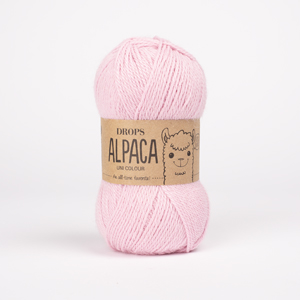







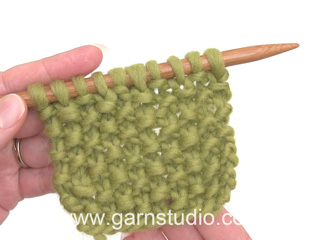
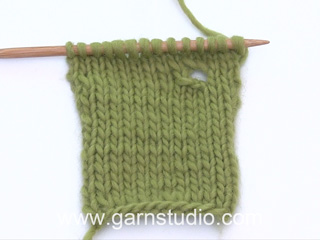
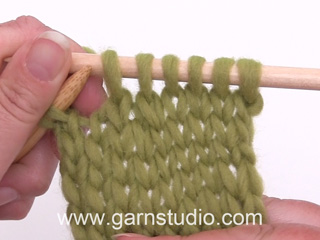

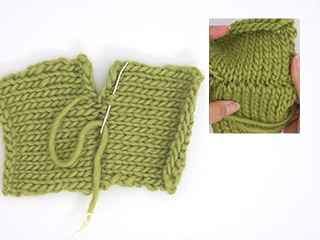
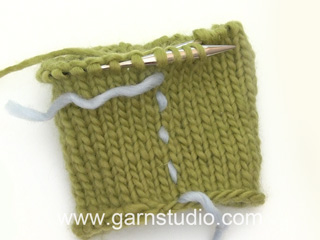

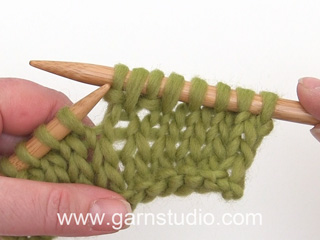

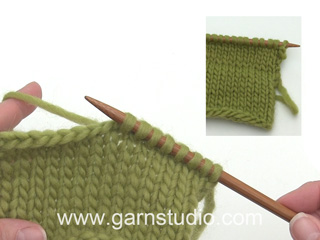

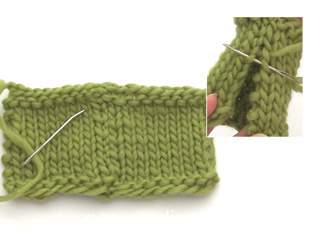
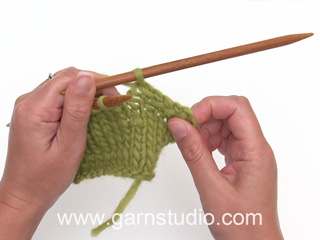

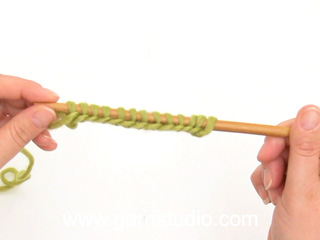

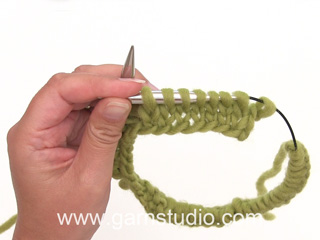
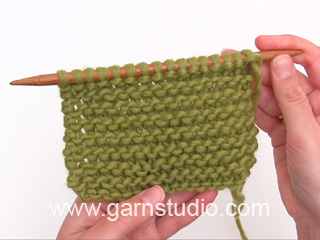





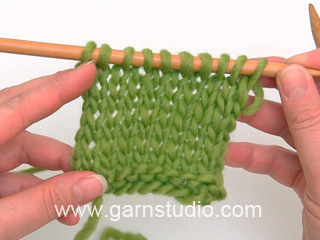




















Comments / Questions (12)
Vielen lieben Dank! Hat gut funktioniert.
04.10.2024 - 14:43Ich stricke gerade das Jäckchen. Die Anleitung für den Kragen verstehe ich nicht. Was bedeutet innerhalb einer Randmasche? Soll 3 mal eine Masche aufgenommen werden und danach weiter Krausrippen bis 4cm erreicht werden? Vielen Dank und liebe Grüße!
03.10.2024 - 19:37DROPS Design answered:
Liebe Wiebke, "innerhalb der Randmasche" bedeutet nach der Randmasche am Anfang der Reihe und vor der Randmasche am Ende der Reihe, so wird man bei jeder Hin-Reihe 3 Mal zunehmen; dann nach 4 cm wird man abketten: 1 Masche am Anfang der nächsten 4 Reihen (1 Masche 2 Mal beidseitig) und 2 Maschen am Anfang der nächsten 4 Reihen (2 Maschen 2 Mal beidseitig). Viel Spaß beim Stricken!
04.10.2024 - 07:26Ich stricke die Strampelhose. Beim Rückenteil sollen je Seite im Schritt 12 Maschen abgekettet werden. Dann beide Teile zusammengefasst weiter gestrickt werden. Wie sollen den später die abgeketteten Enden eingenäht werden ?
13.03.2023 - 08:59DROPS Design answered:
Liebe Evelyn, dieses Video zeigt, wie man solche Maschen zusammennäht. Viel Spaß beim stricken!
13.03.2023 - 10:46Bonjour, serait-il possible s'il vous plait, d'avoir une traduction des points utilisés pour les diagrammes M1, M2 et M3. Merci
29.03.2019 - 16:32DROPS Design answered:
Bonjour Françoise, vous trouverez la légende des symboles juste au-dessus des diagrammes, et ici, comment tricoter un diagramme. Bon tricot!
01.04.2019 - 11:33Pour finir la salopette, selon les indications, on doit rabattre pour l'encolure au dos à 56cm, mais rabattre pour les épaule à 54 cm. On se retrouve avec une encolure plus haute que les épaules, ce qui reste étrange, et est infaisable sur l'ouvrage. Soit j'ai raté un truc, soit il y a une petite erreur ... Je pensais faire l'inverse. Merci de m'aiguiller.
13.01.2019 - 15:32DROPS Design answered:
Bonjour Mme Paquet, il y avait effectivement une faute de frappe, on rabat les mailles de l'encolure à 52 cm (et celles des épaules à 54 cm). La correction a été faite, merci. Bon tricot!
14.01.2019 - 11:38Hej Jeg har brug for at finde ud af hvordan jeg kan strikke diagram M.1, det kan jeg ikke finde ud af. Kan man se det i video? Jeg har problemer med at strikke 2 m , hvor først strikkes 1 R uden at slippes af venstre p, derefter strikkes 1 r i bagerste del af m, slip m af p. Jeg kunne godt tænke mig et video på Diagram M1, M2 og M3. Med venlig hilsen Bozena
17.07.2016 - 15:25DROPS Design answered:
Hej Bozena. Vi har desvaerre ingen video af mönstret lige nu. Men du strikker 2 m i 1 som i videoen herunder. Dvs, du tager 1 m ud paa hver side af M.1 og i midten tager du 2 masker ind = antal masker forbliver det samme:
19.07.2016 - 14:08Louise Kahle4 wrote:
That is the perfect jacket for a baby girl. I am starting today!
12.05.2015 - 18:17Hola, me gustaría saber qué significa la sigla pjd en M1 de este patrón. Gracias!
07.08.2014 - 05:41DROPS Design answered:
Hola Valeria. 2 pjd = trabajar 2 pts juntos de derecho.
08.08.2014 - 15:12I am trying to knit the 12/18 month size of jacket. Casted on 220 sts. The bands on either end use 10 sts, which leave 210 sts for the pattern. But the pattern worked 19 times covers 209 sts. What do I do with the 1 extra stitch?
19.02.2014 - 16:02DROPS Design answered:
Dear Mrs Murphy, you will work 1 st in st st before last front band edge - see text, pattern has been edited. Happy knitting!
19.02.2014 - 21:04Hoi Elisabeth. De Nederlandse verklaring van de symbolen in de teltekening staan onderaan dit patroon, in dezelfde verticale volgorde als de symbolen naast de teltekening. (zie "motief" in het patroon). Onderaan staat er vervolgens "VERTALING SYMBOLEN TELTEKENING". Succes met het breien ;o).
27.11.2007 - 10:39